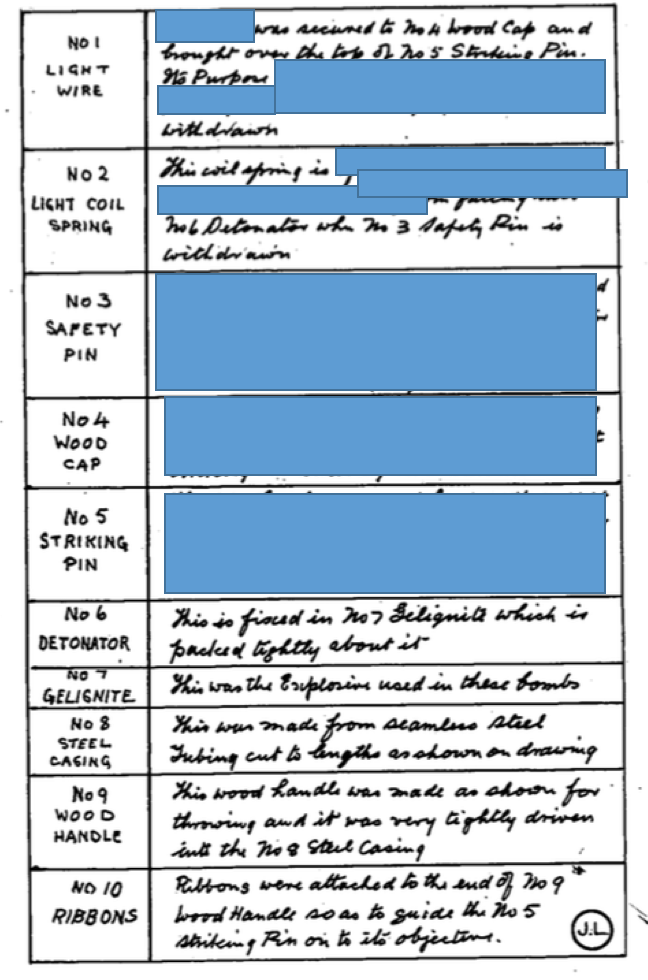Some earlier posts discussed the home made explosives and IEDs manufactured by Irish republicans shortly after WW1 (around 1920), and I’ve returned to the trove of information I have discovered on this subject. One of the themes of this blog has become the way in which today’s counter-terrorist operatives can learn lessons from the past, and this is a particularly good example. During the 1980s one of a number of explosive devices designed by the Provisional IRA was a “drogue bomb”. This basically consisted of a tin full of explosives, with a striker fuze behind it, and it was lobbed at vehicles with plastic strips trailing behind it to ensure it hit the target nose first so activating the striker by momentum. To the EOD operator this was simple but “new” device.
What is interesting is that it wasn’t new at all. In about 1920 the IRA had previously developed what they called then a “drogue bomb”, and the diagram is shown below. For obvious reasons I’ve left off some of the technical detail – if you are an appropriately accredited EOD operator contact me and I’ll give you the full diagram. There are of course some differences between this 1920 design and the one from 60 years later in the 1980s… the striker mechanism has switched from the front to the back, and the steel case in the earlier device is thicker. Those of you knowledgeable of other IRA mortars from the 70’s, 80’s and 90’s will also recognise certain aspects of the fusing from this earlier device. I can tell you that EOD operators of my generation had no knowledge of the history of Irish republican device design from earlier campaigns. More fool us. As I’ve shown in earlier blog posts, improvised munition design used by Irish republicans goes back not only to this post-Easter Rising period, but to much earlier back to almost 1800. Previous blogs to have highlighted the similarity between an IRA mortar of this 1920 period and the British Stokes Mortar of WW1.
Of course there are similarities to this device and Russian grenades, and I believe also to WW1 German trench grenades which I suspect this device is derived from.


